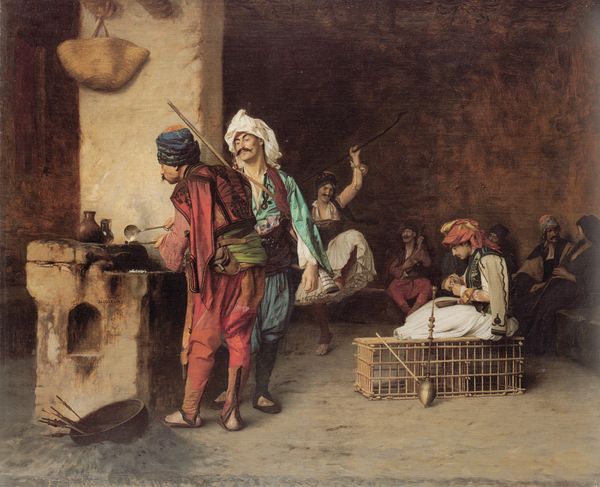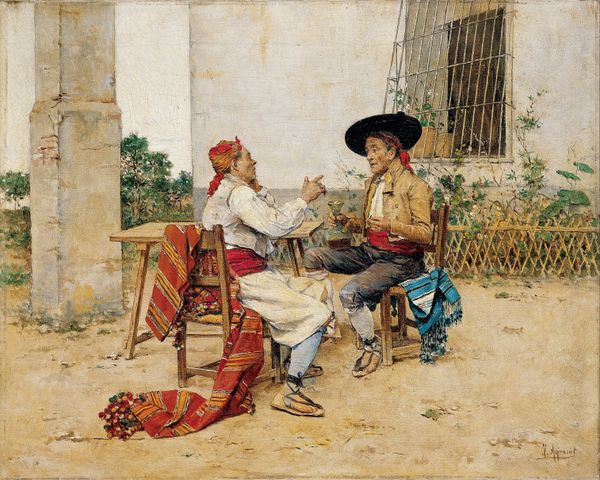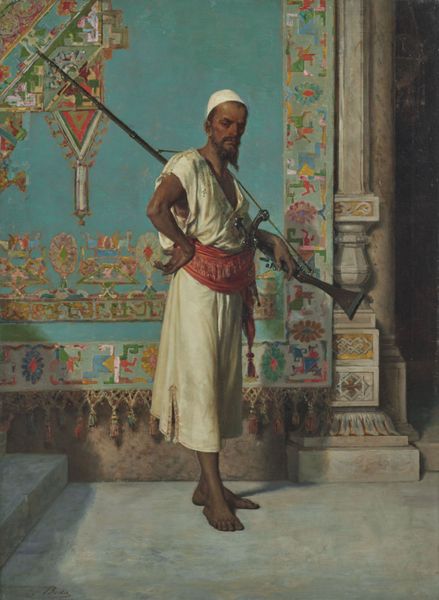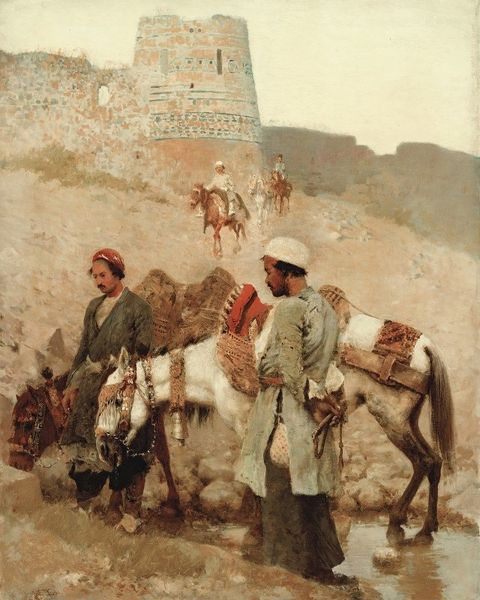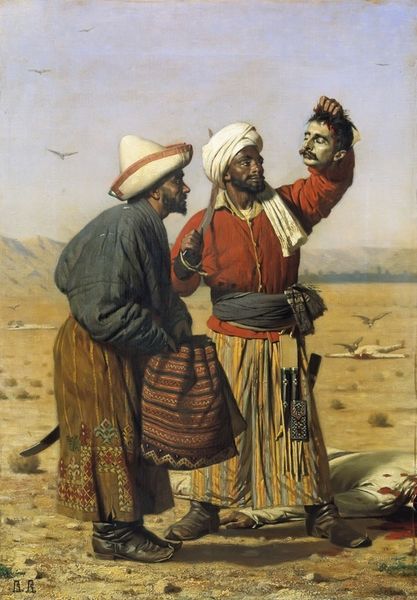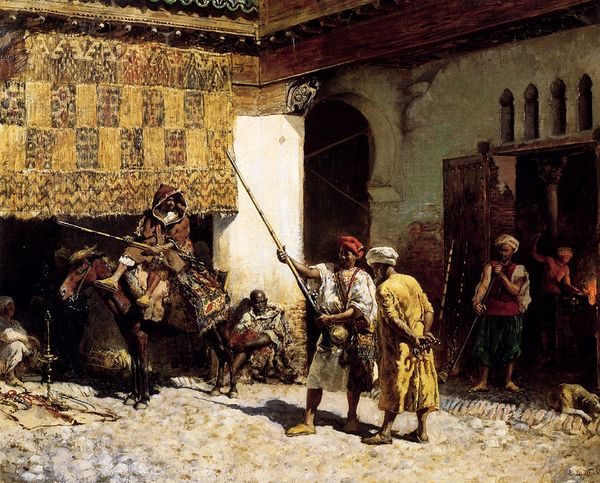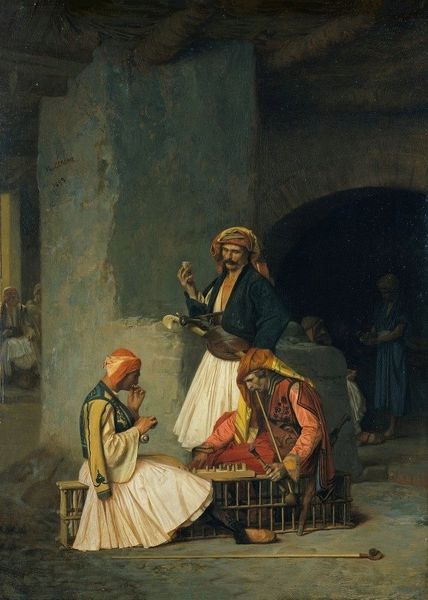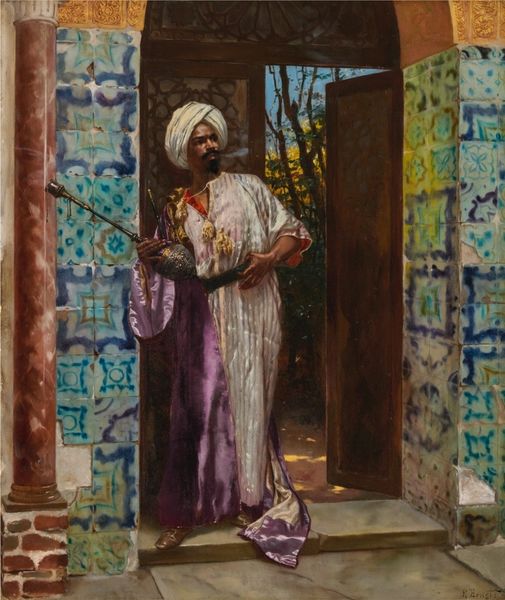
watercolor
#
portrait
#
16_19th-century
#
landscape
#
oil painting
#
watercolor
#
orientalism
#
human
#
genre-painting
#
academic-art
#
mixed media
#
watercolor
Copyright: Public domain
Curator: Giulio Rosati's "The Conversation" certainly invites one in, doesn’t it? It’s crafted with watercolor, giving it this beautifully light and airy quality. Editor: Immediately, I’m struck by the atmosphere—it’s tranquil, yet the subtle buzz of implied conversation charges the scene. The palette leans toward sun-bleached earth tones, creating a feeling of warmth and stillness. Curator: I agree. Rosati clearly aimed to capture a fleeting moment of connection within this North African setting. Look at how the men are positioned; one gesticulates as if in the middle of a crucial point. Editor: That gesture is key, isn’t it? It draws attention to hands—hands that speak of tradition, maybe even hardship. Those garments they wear tell tales, too; potent symbols of culture and status interwoven in that casual street tableau. It reads as very carefully constructed despite the initial impression of everyday life. Curator: I think you are spot-on. But don’t forget, this piece emerges from the era of Orientalism. While we can appreciate its technical skill, we should also reflect on the colonial gaze inherent in depicting these "exotic" scenes for a Western audience. The composition places the local figures firmly in their environment, creating a sense of "otherness". Editor: Absolutely. The backdrop becomes crucial, a character of its own. Those buildings with their cool shadows juxtaposed against the brilliant light create an almost stage-like setting for these encounters. Symbolically, this architectural landscape anchors the figures in time and space, yet, as you mention, framed through an outsider's perspective. Curator: Exactly. While Rosati perhaps intended only to capture beauty and cultural distinction, history complicates our viewing. This compels me to wonder about the ethics involved in its making. Can the exquisite rendering truly absolve its origins within colonialism? Editor: It's an interesting question that lingers even after our conversation. The dialogue isn’t just on the canvas, is it? We, too, enter into dialogue with the artist and with the subjects across the years. It highlights how viewing is never a passive activity, that even visual serenity can carry heavy historical baggage.
Comments
No comments
Be the first to comment and join the conversation on the ultimate creative platform.
